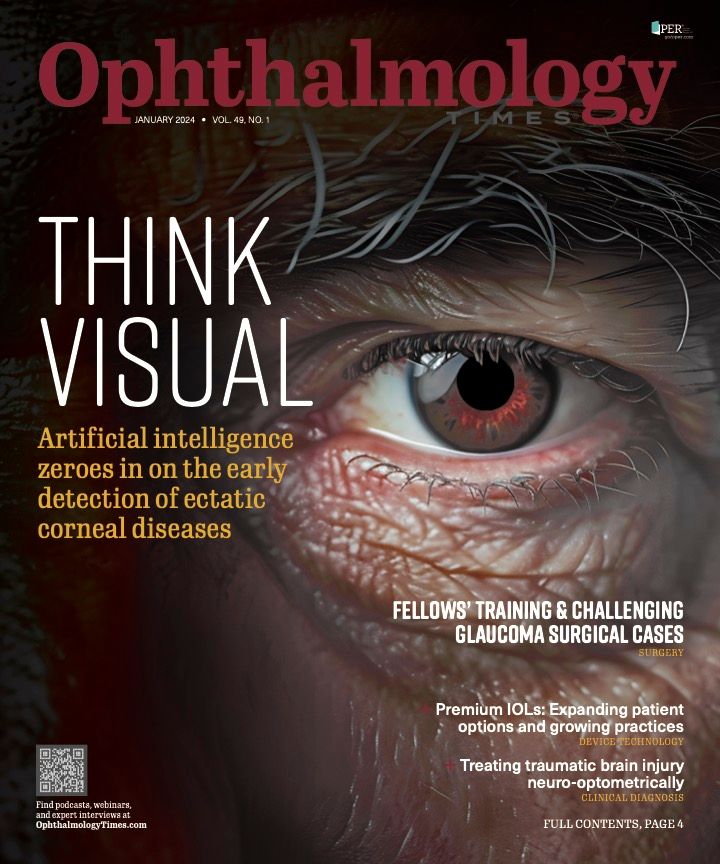Publication
Article
Digital Edition
Biosimilars to treat retinal diseases: Successful outcomes, patient satisfaction
Author(s):
Two retina specialists participated in an Ophthalmology Times case-based roundtable discussion and shared their experiences using the anti-VEGF biosimilars, ranibizumab-eqrn and ranibizumab-nuna to manage retinal diseases.
(Image Credit: AdobeStock/RomixImage)

Two retina specialists participated in an Ophthalmology Times case-based roundtable discussion and shared their experiences using the 2 FDA-approved anti-VEGF biosimilars, ranibizumab-eqrn (Cimerli; Coherus BioSciences) and ranibizumab-nuna (Byooviz; Biogen) to manage retinal diseases.
Treating AMD, CRVO, and DME
Dilsher S. Dhoot, MD, of California Retina Consultants, Santa Barbara, explained that biosimilars are created from living cells or organisms and are used in various medical fields besides ophthalmology, including oncology, rheumatology, and gastroenterology. He noted a biosimilar is highly similar to its reference product, with no differences in efficacy or safety.
Dhoot said he has had positive experiences with biosimilars in patients with neovascular age-related macular degeneration (AMD), retinal vein occlusion (RVO), diabetic macular edema (DME), diabetic retinopathy, and myopic choroidal neovascularization. He considers treatment-naive patients and those on bevacizumab (Avastin; Genentech) or ranibizumab (Lucentis; Genentech) as candidates for biosimilars.
Dhoot described the case of a Caucasian woman, aged 73, with neovascular AMD and a presenting vision of 20/25 in the left eye and IOP of 12 mm Hg; the posterior segment examination showed drusen and retinal pigment epithelial changes. A month later, the patient reported a central scotoma and a visual decrease to 20/30. Imaging showed thickening and edema. Ranibizumab biosimilar resulted in significant improvements during follow-ups, with the patient’s vision improving to 20/20-1.
Another case involved a woman, aged 79 years, with central RVO (CRVO) who presented with 20/100-1 vision and central visual disturbances. The anterior segment examination showed pseudophakia, and the posterior segment examination showed typical CRVO. With ranibizumab biosimilar, the retinal anatomy and vision improved; subsequent doses of the drug led to continued stability and improved vision to 20/60.
Rishi Singh, MD, staff surgeon and president of Cleveland Clinic Martin Hospitals, Stuart, Florida, provided valuable insights into use of biosimilars for managing AMD and DME. He explained that biosimilars offer advantages: savings and efficiencies for health systems, more options for patients, and fostering of innovation through competition for patients. In addition, the late-phase trials of the drugs can be markedly shortened by looking at the primary end point alone in a very short period, which can help biosimilars get into clinical practice.
Regarding biosimilar interchangeability, the drugs must have the same clinical safety and efficacy as reference products in a given patient. Biosimilars also do not increase risks to safety and diminished efficacy in patients switching back and forth between interchangeable products; there is a common misconception that switching drugs can worsen disease.
“Generally, biosimilars have been studied in various diseases and demonstrated great efficacy,” Singh said. “Thus far, in ophthalmology the totality of data from currently available biosimilars has not shown significant concerns regarding safety and efficacy.”
Singh described a woman, aged 80 years, with neovascular AMD. The right eye had a macular hemorrhage with 20/400 vision and foveal leakage consistent with a minimally classic or occult lesion in the foveal region. The left eye vision was 20/40. Imaging showed subretinal fluid. Following 1 ranibizumab biosimilar injection, she had a great anatomic response within 4 to 6 weeks.
Over time, the patient remained stable without significant amounts of fluid. She had treatment intervals of 4 to 6 weeks before fluid recurred. Singh showed images demonstrating the beneficial effects on vision and anatomy resulting from biosimilar treatment. The patient’s vision improved from 20/400 to 20/40 with biosimilar injections every 4 to 6 weeks.
Singh also described a man, aged 60 years, with DME. The right eye showed abnormal hemorrhages and microaneurysms with some capillary nonperfusion but no microischemia. The visual acuity (VA) was 20/60 in the right eye and 20/40 in the left eye.
“We found tadministering ranibizumab biosimilar in the 0.3-mg format for DME, patients can achieve treatment intervals of 4 to 6 weeks and out to 2 months in clinical practice,” he said. “I found patients maintained 20/30 vision after getting a few biosimilar injections without recurrences at any time over a long period.”
Patient selection
Patients who may benefit from biosimilars are those who cannot afford commercial drugs or who have an insurance step plan that requires biosimilars for treatment over time; patients with difficult-to-manage disease who need long-term treatment may have decreased drug costs with biosimilars. The greatest consideration when switching patients to a biosimilar is whether their disease progresses, or the VA worsens, or they develop intraocular inflammation. Singh noted that patients should be followed closely to determine the appropriate time to switch based on treatment responses.
“Patients with a robust treatment response with good overall VA currently are not candidates for biosimilars,” Singh concluded. “Biosimilars show great promise in retinal diseases by reducing health care costs, increasing the drug distribution/availability for patients, and transforming eye care akin to what was done almost 25 years ago with anti-VEGF therapy for these conditions.”

Newsletter
Don’t miss out—get Ophthalmology Times updates on the latest clinical advancements and expert interviews, straight to your inbox.




